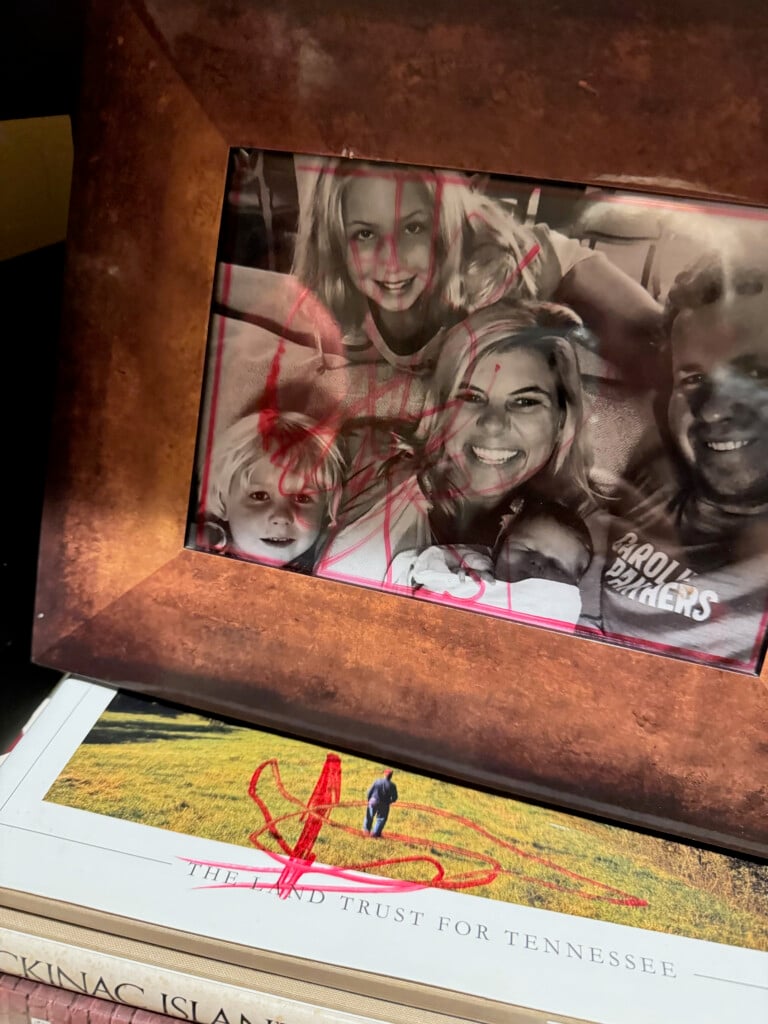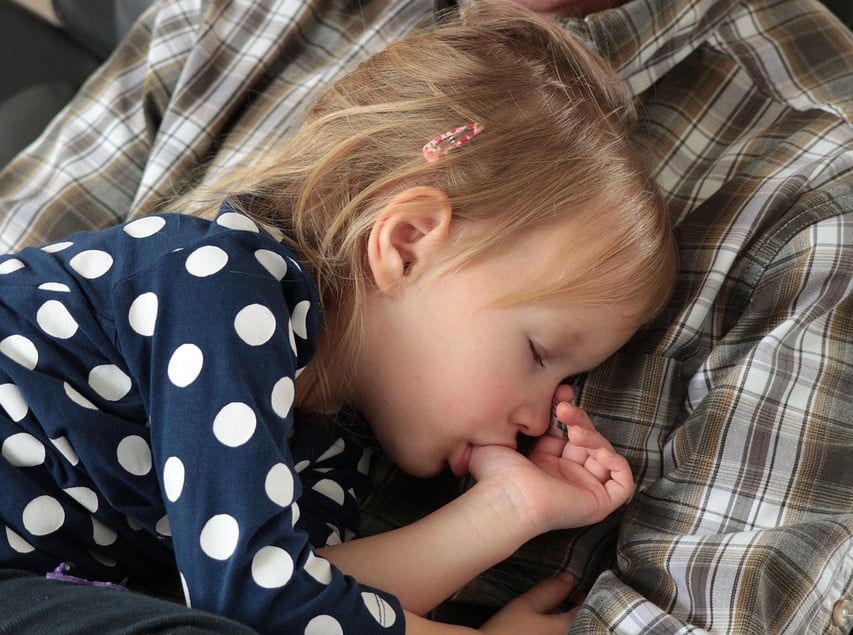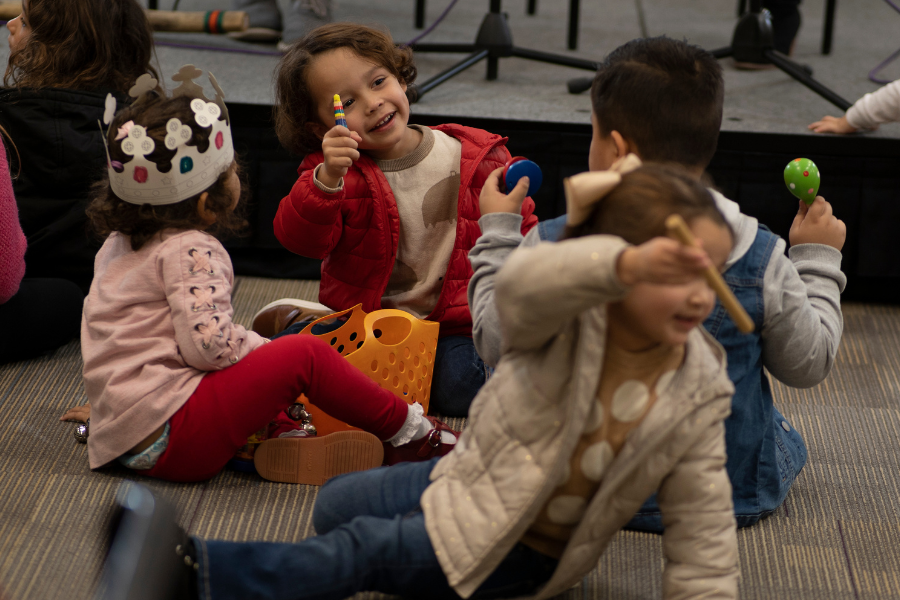ASK A MOM: Sharpee damage, summer boredom, and attention-seeking toddlers
Molly Grantham tackles your parenting questions in this ongoing series

Q: Hi, Molly! This probably sounds familiar: My 3-year-old took a black Sharpie to my white wainscotting AND upholstered couch. He drew X’s down the staircase and into the living room “to protect his sister from the ninjas.” (I swear you can’t make this up) I saw you’re in a similar situation at your house. Any genius hacks for removing Sharpie from walls and furniture? —Heather
A: FUNNY YOU SHOULD ASK. I posted my 3-year-old’s red Sharpie on all five pieces of our white sectional—every piece decimated—and though mine was a lost cause, I got lots of advice and tried many of the ideas. Had mine not been bright red, with Hobie digging deeply with a permanent marker, some might have worked. Two professionals, however, said, “Unfixable.”
I compiled the following list from hundreds of suggestions people sent through Instagram, Facebook, and email.
- Rubbing alcohol with Q-Tips (to blot, not scrub)
- Nail polish remover
- Magic Eraser
- Non-aerosol hairspray
- Baking soda
- Hand sanitizer
- Shaving cream (I didn’t try that one)
- Windex
- “Goo Gone and Awesome in super hot water has saved many white items in my house.”
- Folex
- Solumel
- Miss Mouth’s Stain Treater from Amazon
- Grandma’s stain remover, laundry aisle
- W-D 40
- White distilled vinegar
- “Call the manufacturer for ideas.”
- “I used spray cleaner called Totally Awesome to remove black Sharpie off microsuede couches—clean in small areas and then use soap and water to clean entire area.”
- “Sunscreen gets Sharpie off kid’s bodies, arms, and legs after swim meets.”
- “If you have Sharpie on another surface, like a white board, you can sometimes color over it with a dry erase marker, then wipe—they both come off!”
- “Call a fabric cleaning company, ASAP.”
- “Stanley Steamer!”
- “Put it on the porch and let everyone graffiti on it to make a piece of art?”
- “No advice except a kid-free space for a day.”
- “I heard ice cold martinis help.”
- “Call bulk trash pick-up, schedule it to be taken to the dump.”
And for those reading this in the Charlotte-area, shout out to professional cleaner Tony McKnight of Carpet Care of Metrolina. His name got passed on to me from a woman with beautiful taste. “He’ll get anything out, if it can be removed,” she said. I called him. He picked up. He listened. He was available to help ASAP. He asked me to text videos. Then he shot me straight and said, “I’m so sorry—lost cause.” I appreciate directness and expert knowledge laced with empathy. Look him up if you need instant human opinion.
Q: I need an “I’m bored, what can I do?” list for summer while I work from home. Kids are 8 and 5. —Annalisa
A: This often gets said in my house, too. Makes me nuts. Growing up, my parents didn’t care an ounce if I was “bored.” With nothing to do, I’d find a book or create something. Over the past few decades, however, there’s been a shift. We’re raising kids in a world (one we’ve created!) with an unspoken rule: Parents are responsible for stacking our kids’ schedules with stuff.
**Transparency: I’m tackling this answer after waking up at 5:30 am to sign my middle child up for yet another week-long summer camp. New slots opened. I got up early to snag one. Though aware of this societal problem, I continue to feed its cycle.
To answer your question, I took your questions to Kathy Izard, award-winning author of five books—three nonfiction for adults and two illustrated children’s books—with her newest one out now, called Trust the Whisper.
“As the mom of four daughters and grandmother to two grandsons, I understand the ‘I’m bored’ cries when the newness of summer wears off,” she says. She shared this great list of activities:
- Scavenger Hunt (inside or outside). Write a list of clues the 8-year-old can read and help lead the 5-year-old to things they can look for either inside or outside your home. Start with easy clues; make them more difficult as summer wears on. Ten hidden items can keep young ones busy a long time. **If your child is not of reading age, take photos on your phone of the items you have hidden.
- Car-ride Scavenger Hunt. If going on a long car trip, give your children a list of things to find along the journey: a red barn, a white cow, a pink car etc. you can create teams in the car so the first one to find wins or assign points to items: a red barn (10 points) , a white cow (25 points), a pink car (50 points) and let them practice math to see who is winning.
- Greeting Cards. Have your kids make them for family and friends. This was the genius activity of my mom when we were growing up. She had containers of all kinds of art supplies: markers, stickers, glue, scissors, paper, magazines. When it was a relative’s birthday, she’d get out the “Hallmark” supplies. As we got older, she challenged us to create “themes” or funny lines to go in the cards like a greeting card.
- Pen Pals. Use the above idea to also create a summer pen pal and write back and forth on handmade cards with friends, grandparents or out of town friends. It makes getting the mail a whole other activity to ease boredom.
- Dress-up Trunk. Create a box with all kinds of dress up possibilities. Let imagination be the guide. Hats, pieces of costumes, your oversize clothes, brightly colored boas or beads. Pretty much anything goes, and you can add to it all summer. Turn on some tunes and let them dance.
- Book Plays. Get out the dress up trunk and those art supplies then let your children choose a book. Their challenge will be to create a play using the book as their inspiration. Again, anything goes. They can dress up as the characters using the dress up trunk, they can create scenery and props with the art supplies. They can use their dolls, toys, blocks and stuffed animals as more props and characters in their play. The first time, you might have to guide them, but after that, let one of your children or their friends be the “director.” They might even make it into a musical or dance production and create a true showstopper!
- Hucklebuckle Beanstalk. This comes from my mother-in-law who played this with 16 of her grandchildren. Choose a small item like a tiny porcelain figure or anything the size of a quarter. One person is the “hider” and everyone else leaves the room. The Hider should disguise the item in some way in the room where it’s still visible—like, a bookshelf partially hidden next to a photo frame. Once hidden, everyone comes in and begins to look. If you see the item, you call out, “Hucklebuckle beanstock,” and sit waiting for others to find it too. You can’t give clues, and best not to yell right when you see it. Move away from the item and sit somewhere else before yelling. Last one to find the item chooses who will hide it next round (they can’t pick themselves!).
Thank you, Kathy, for such thoughtful suggestions. For other ideas, Google lists “bike ride, drawing, make an obstacle course, make up dance routines, wash the car, chalk on driveways or sidewalks, puzzles, yoga or exercise videos for kids, baking cookies, organizing your dresser.” With kids 5 and 8, not all of these might apply for you (read: they need parental assistance which would defeat the purpose), but might help someone else reading this column.
Now… returning to concept in the top paragraph… here’s an article on Today’s Parent that encourages us to leave our kids “bored.” If you like that thought, the JFCS suggests when they say, “I’m bored,” you respond by saying, “I guess nothing sounds fun right now.” After initially responding, stop and say nothing more.
“Remember as a supporter, you are teaching your child to solve their own boredom problem so be careful to not slip into giving your child advice.” Read more on that article here.
Kids will find things to do. If you’ve exhausted your ideas, don’t like Kathy’s list, Google’s list, and don’t want them to be on screens… hide the remotes and send them outside. They’ll create fun.
Q: I just had my third baby and our toddler is struggling with hitting her. Any tips for putting a stop to this?
A: “First, congratulations!” says Dr. Sheryl Ziegler, a licensed clinical psychologist. “Having three kids is challenging, so take everything in stride. And as you surely know, older siblings hitting new babies is normal, though, you obviously want to stop this so it doesn’t hurt the baby.”
Dr. Ziegler says first understand they are likely hitting because they are seeking attention, feeling jealous, or getting overwhelmed by emotions they cannot yet express verbally.
“Teach them to touch gently and give praise when they do. Give them a special role, like getting the bottles, diapers, or toys. But most importantly, carve out time every day to spend time with just your toddler—no baby around. Doesn’t have to be doing something extra special with them, just one-on-one time where they can have your undivided attention. Half an hour is probably enough… but if they want more, try creating two time blocks for them, maybe 15-minutes each.”
Similar thoughts from the National Childbirth Trust. It says if you yell at a toddler who hits a new infant sibling, then you’ve given that toddler what they want: Attention.
“Toddlers might throw a toy at their sibling, pinch them or hit them,” the NCT says. “You’re likely to be tempted to shout at them. The thing is: that was kind of their aim. Instead, give your attention to making sure the baby is ok and then they’ll think that was a waste of time and (hopefully) not bother again.”
And remember, it’s a phase.
“They will grow out of it,” Dr. Ziegler says. “But addressing it by simply giving them what they want—time with you!—usually does the trick.”
That’s a wrap on June. Until next month… here’s to hoping you don’t have too many arguments over putting on sunscreen.
—Molly
MOLLY GRANTHAM is a four-time Emmy Award-winning journalist, speaker, author, and mom of three. Follow her on Facebook or Instagram, or visit mollygrantham.com.









